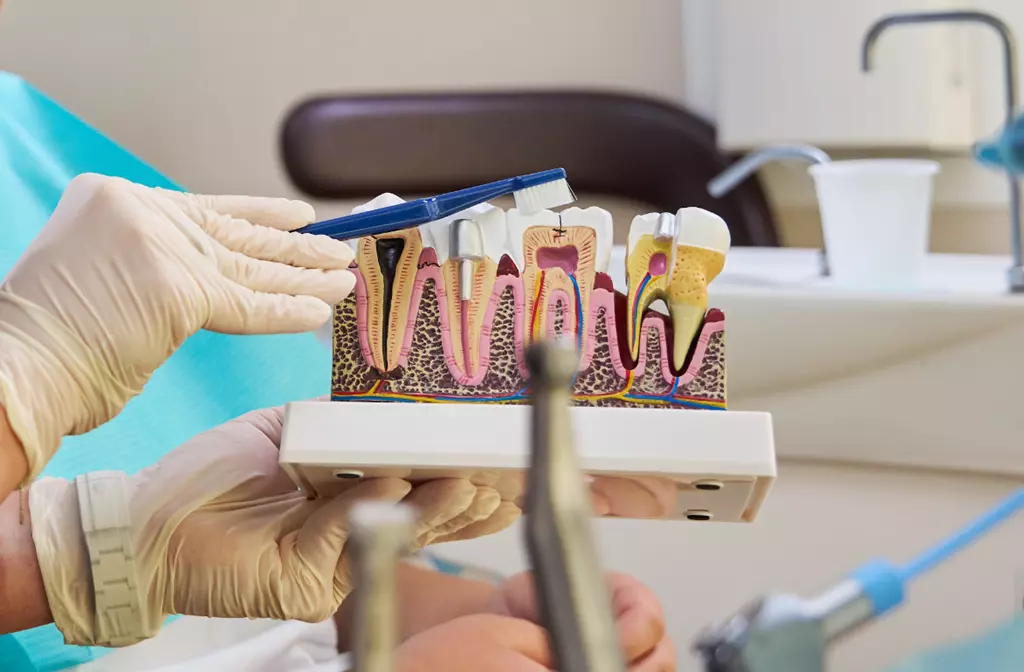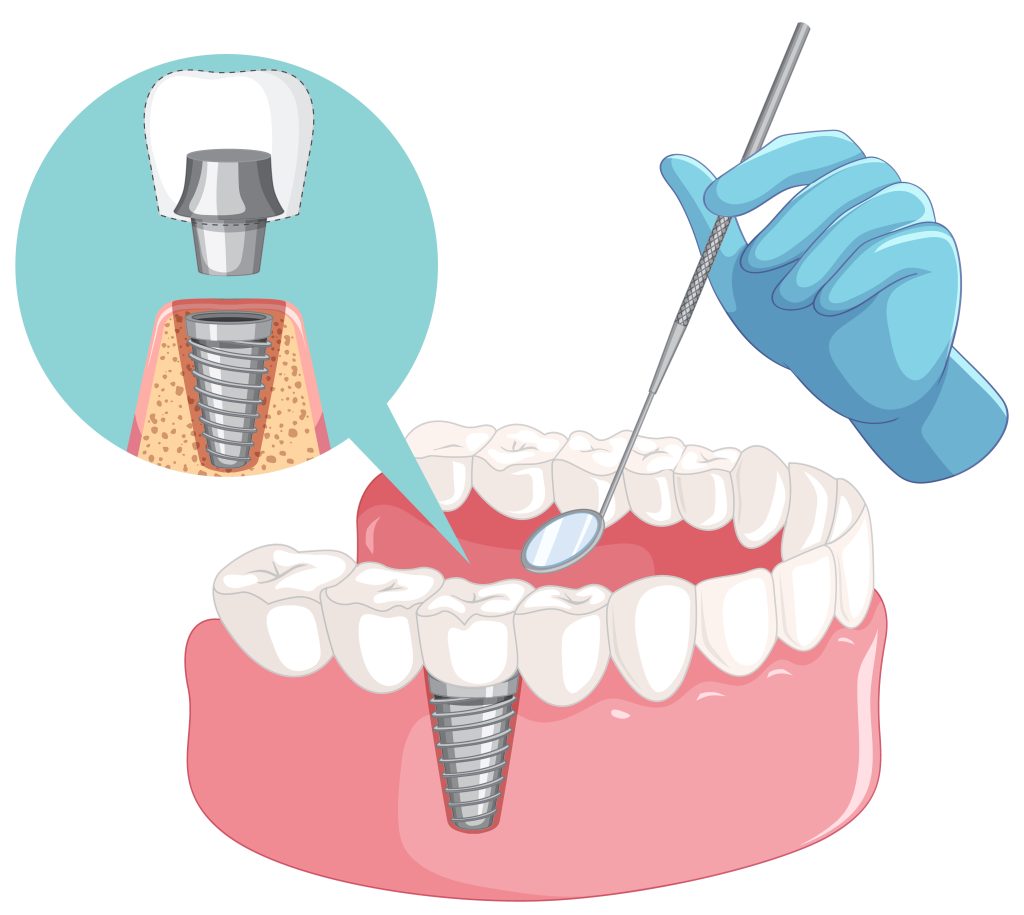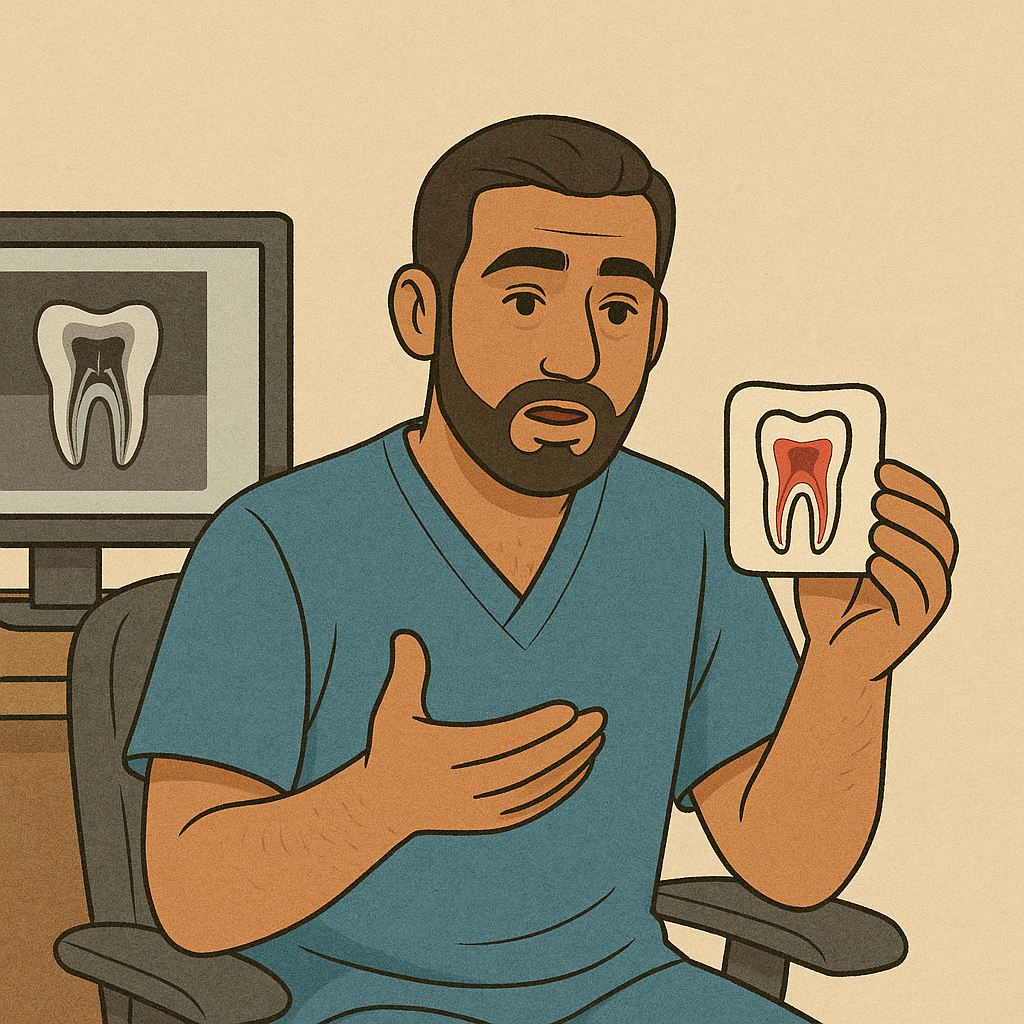Full-Mouth Rehabilitation with Implants (Edentulism Treatment): Procedure, Benefits, and Aftercare
When Is Full-Mouth Rehabilitation Recommended?
A dentist or oral surgeon may suggest this procedure in the following cases:
- Complete Tooth Loss (Edentulism) – Patients who have lost all teeth in one or both jaws.
- Severe Tooth Decay or Periodontal Disease – When most remaining teeth are unsalvageable.
- Unstable or Uncomfortable Dentures – For individuals who want a more secure and permanent alternative to removable dentures.
- Bone Loss Prevention – To maintain jawbone structure and facial aesthetics.
- Improved Chewing and Speaking Ability – For patients struggling with speech or eating due to missing teeth.
Types of Full-Mouth Implant Solutions
- All-on-4 Implants – Four strategically placed implants support a full-arch prosthesis, offering a cost-effective and minimally invasive solution.
- All-on-6 or All-on-8 Implants – Additional implants provide enhanced stability and durability for long-term restoration.
- Implant-Supported Dentures – Removable dentures that clip onto dental implants for improved stability.
- Full-Arch Fixed Bridges – Permanently attached prosthetic teeth supported by multiple implants.
The Full-Mouth Rehabilitation Procedure
1. Initial Consultation and Planning
- Comprehensive evaluation with X-rays, CT scans, and digital impressions.
- Discussion of treatment options, expected results, and patient expectations.
2. Tooth Extractions (If Necessary)
- If some remaining teeth are damaged or decayed, they are removed to prepare for implants.
3. Bone Grafting (If Required)
- If the jawbone lacks sufficient density, bone grafting or sinus lifts may be needed to create a stable foundation.
4. Implant Placement Surgery
- Titanium implants are strategically placed into the jawbone to provide maximum stability.
- Healing caps or temporary prosthetics may be placed for immediate function.
5. Healing and Osseointegration
- Over the next 3 to 6 months, the implants fuse with the bone, creating a secure anchor for the prosthetics.
- Patients follow aftercare instructions to ensure successful integration.
6. Final Prosthetic Attachment
- Once healing is complete, custom-made fixed bridges, dentures, or crowns are securely attached to the implants.
Benefits of Full-Mouth Rehabilitation with Implants
- Permanent and Stable Solution – Provides a long-lasting alternative to dentures.
- Natural Appearance and Function – Closely resembles natural teeth in look and feel.
- Improved Speech and Chewing Ability – Restores normal oral function.
- Prevents Bone Loss and Facial Sagging – Stimulates the jawbone, maintaining facial structure.
- Eliminates Denture-Related Discomfort – No slipping, adhesives, or irritation.
- Boosts Confidence – Enhances smile aesthetics and self-esteem.
What to Expect After Full-Mouth Implant Surgery
- Mild Swelling and Discomfort – Managed with pain relievers and cold compresses.
- Soft Diet – Eating soft foods during the healing phase minimizes implant stress.
- Oral Hygiene Maintenance – Regular brushing, flossing, and professional cleanings prevent complications.
- Limited Physical Activity – Avoid strenuous exercise for a few days post-surgery.
Possible Complications and How to Prevent Them
- Infection – Maintain proper oral hygiene and take prescribed antibiotics if needed.
- Implant Failure – Smoking, diabetes, or poor bone integration can affect implant stability.
- Speech Adjustments – Patients may need time to adapt to speaking with new prosthetic teeth.
- Temporary Swelling or Bruising – Normal side effects that subside within a few days.
When to Contact a Dentist
Seek immediate care if you experience:
- Severe pain or swelling beyond the normal healing period.
- Unusual bleeding or pus formation.
- Loosening of implants or prosthetics.
- Signs of infection, such as fever or persistent bad breath.
Conclusion
Full-mouth rehabilitation with implants is a life-changing solution for patients suffering from complete tooth loss. This procedure restores function, aesthetics, and overall oral health, allowing patients to enjoy a confident smile and improved quality of life. If you are considering full-mouth implants, consult your dentist to explore the best treatment plan for your needs.
























